Cave Biology 101: The Cave “Biome” in Real Life
Animals, Adaptations, and Biodiversity Explained
Like many things that we know little about, caves have been feared and misunderstood for most of our history. The dark unknown leads us to imagine either complete lifelessness, or perhaps that ghouls and monsters are lurking in the shadows. However, despite the difficult environment in a cave, and general absence of light, there is a surprising diversity of animals that depend on caves to survive, and many that live inside them for their entire lives.
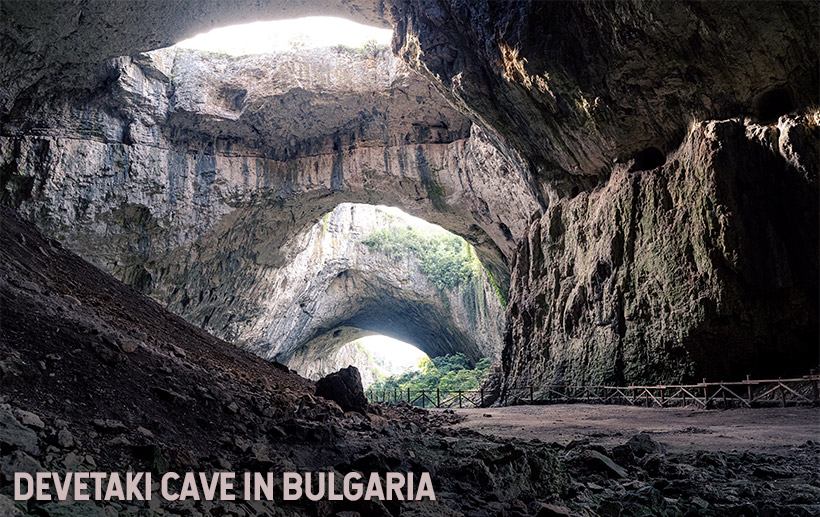
What is a cave?
A cave is most simply defined as a natural void, or space, in the ground. To be a true “cave”, the space must be large enough that a person can enter. The scientific study of caves is referred to speleology. There are many different types of caves found all over the world, and how the caves form is what defines them.
How are different types of caves formed?
Solution cave
This is the most common cave type. Rain water drains into the ground and into pores in the rocks. Mild acids in the rain and in the soil that get pulled down with the water dissolve away rock like limestone, marble, and gypsum creating open spaces and forming a cave.
Within these caves, stalactites (icycle-like structures) and stalagmites (column-like structures) are also formed when the water drips down from the surface and evaporates, leaving behind some of the minerals it has dissolved. Stalagmites often form underneath stalactites from the dripping water, and sometimes they even join up to make a floor to roof column.
These caves often contain large bodies of water, many times in the form of rivers that flow through them and that may enter and/or exit at the surface.
Sea Caves
Waves erode away rock along the sea shore and create caves. Caves near the coast can sometimes be anchialine caves, which contain a mix of fresh and saltwater, making for a very interesting habitat.
Lava caves / Lava tunnels AKA primary caves
The outside of the lava flow hardens, but the inside flows out, leaving a large open space often looking like huge tunnels.
Talus Caves
Caused when earthquakes move rock and material and create a cave from rocks being piled up in a random heap. They are generally quite unstable.
Glacier caves
Caves formed in the space between bedrock and glaciers. Water melts in the center of moving glaciers and carves away large openings in the ice.
Corrasional/erosional caves
Caves formed by erosion, for example a river pushes through filled with sediment and carves out a cave. An Eolian Cave is an erosional cave formed when wind erodes rock over time.
Fracture caves
More soluble rock, like gypsum, dissolves out of a fracture causing rocks to break and collapse in a big block, sometimes forming a cave in between them.
What is the environment like in a cave?
The main characteristics of caves are that they
- Have little to no sunlight
- Have little plant life AKA little primary production and little food
- Depend on a lot of nutrients from outside
These factors together make it a very difficult environment to survive in all the time, because as we know, a lot of life on earth depends on sunlight. Despite this fact, caves hold a lot more biodiversity than you might expect.
What lives in caves? Cave biodiversity
Caves are home to a variety of organisms, both those that live in the caves part of the time, or those that live in caves for their whole lives and never see the outside world. Due to the lack of light, there is normally an absence of plants, except for those that grow around entrances or openings in the cave roof that allow for sunlight to enter. Otherwise, sometimes seeds drift in and grow a short but then die quickly.
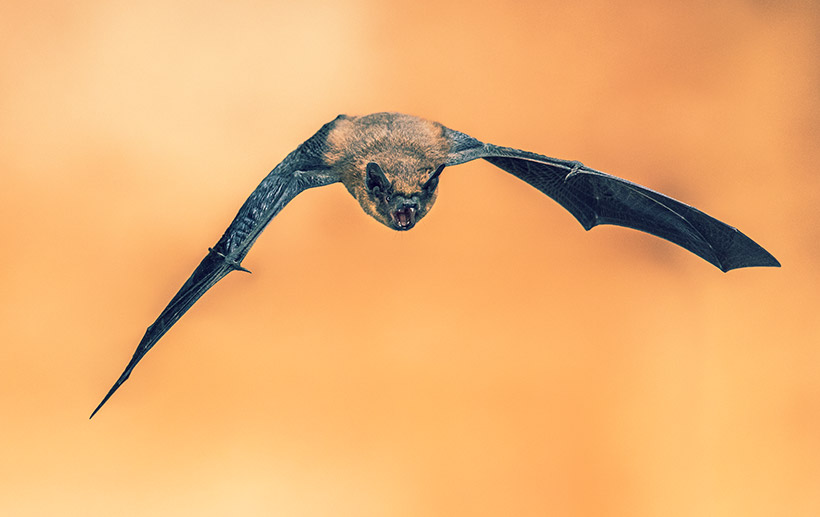
Due to the lack of primary production, most nutrients in a cave need to come from outside. Animals that use caves mainly for shelter while sleeping are a big part of the nutrient input for these ecosystems; they do this by feeding outside and then coming inside to rest, bringing nutrients with them, mainly in the form of feces. Many animals in caves survive off of the excrement of these animals, such as guano from bats (which is just a fancy name for bat poop really). As well, some nutrients are brought in from being washed in by water from above or through flowing rivers.
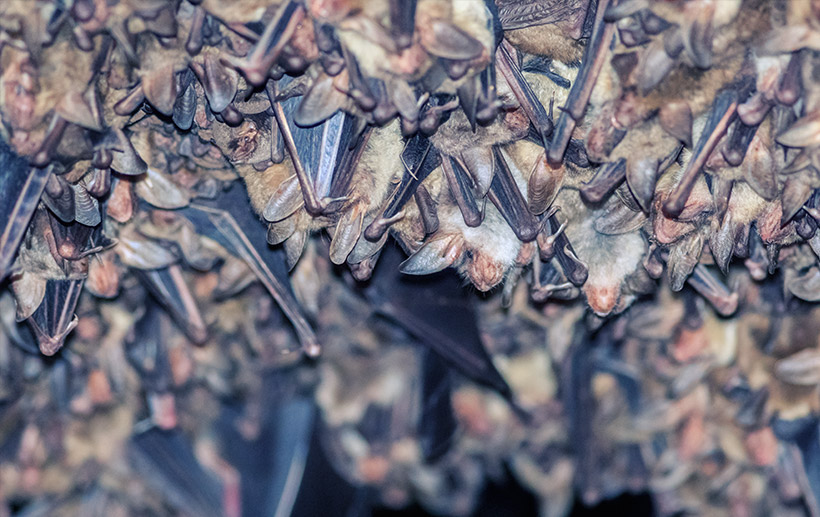
The most obvious example of an animal that uses caves for part of the time are the many species of bats, which use caves to sleep in during the day but go outside at night to feed. As well, there are some nocturnal birds that use caves just like bats, such as the famous Oilbirds (Steatornis caripensis), or Tayo or Guácharo in Spanish. These birds are also nocturnal, sleeping in caves during the day and coming out to feed at night. They have similar echolocation abilities and can fly in short erratic movements, much like bats. Larger animals may also use caves as temporary shelters or even dens to raise their young, but they do not tend to go too far past the entrance either. As well, various invertebrates that can manage well in the dark (because they rely little on their sight), like tarantulas or scorpions, may be found venturing into caves looking for food, though they aren’t necessarily true full time cave dwellers.
So what about things that live in caves all the time? Animals adapted to cave life, that never leave the cave, are referred to as troglobites. These animals include mainly insects, arachnids, and fish that are adapted to life in caves and actually never see the surface. Some examples are collembolans (springtails), cave crickets (Family Rhaphidophoridae), pseudoscorpions (Pseudoscorpionida), tailless whip scorpions (family Phrynidae), and a few interesting fish such as the Mexican tetra (Astyanax mexicanus) or the Andean Astroblepus photeter.
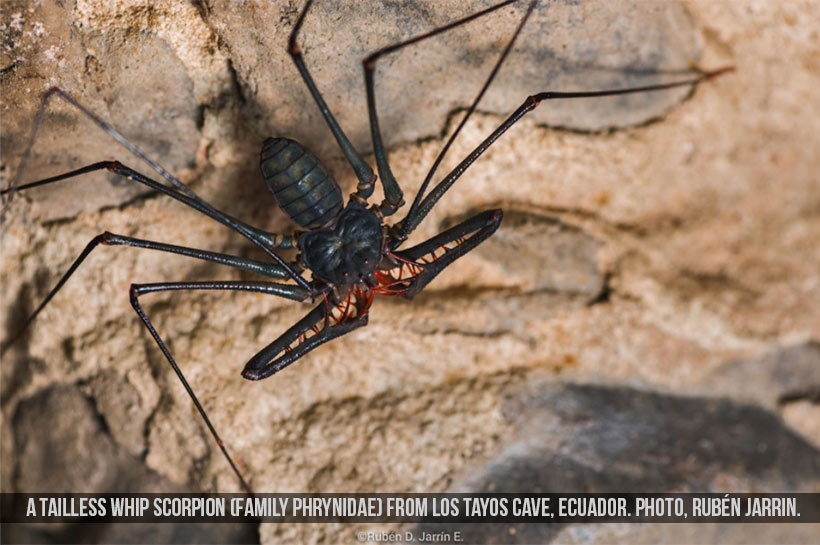
Interestingly, caves tend to be low in biodiversity because it is such a harsh environment, but they add a lot to biodiversity as a whole because species from cave to cave are often very different. Why? Well, the isolation between populations of organisms in different caves creates a phenomenon called allopatric speciation, which is when one population of animals is geographically isolated from another and they become different species over time because they can not reproduce with one another, causing them to become genetically distinct.
What kind of adaptations do cave animals have?
Troglobite animals have physical, physiological, and behavioral adaptations to help them thrive in caves. 3 key physical adaptations are:
- Lack of pigment
- Great reduction of eyes or lack of eyes all together
- Lengthened appendages (fins, legs, whiskers etc.)
Lack of pigment and eyes means these organisms do not waste energy developing eyes and colors that will be totally useless in the dark, energy that instead can be put into growing longer appendages that can help increase their ability to move around and hunt with the sense of touch. This is what biologists call a trade-off. Cave animals do not waste energy on the sense of sight but instead increase their sense of touch, smell and taste.
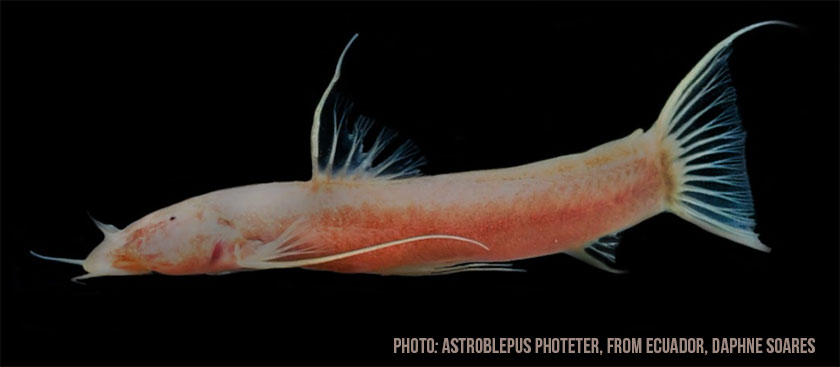
A few examples of physiological adaptations to cave life are:
- Decreased metabolism – resulting in slower growth and longer life spans but less food demand. They also often have fewer offspring than similar species on the surface.
- They have a circadian rhythm completely independent of sunlight – meaning that they still have a “day and night” cycle without relying on the sun.
- Accumulation of lipids which store more energy per unit of food consumed. In the case of swimming animals extra fat also creates more buoyancy which saves more energy.
- Better olfactory systems – which just means a better sense of smell.
Organisms can also have behavioral adaptations to save energy such as being much less active than their above-ground counterparts. They can do this by taking on ambush predator lifestyles, meaning they do not actively stalk their prey but wait for it to come to them, or even by being less aggressive and competitive against their own species (See the part about Tailless whip scorpions (whip spiders) in this video).
Though these are only a few examples of the incredible adaptations one can find in cave animals, it goes to show that organisms that live here, against all odds, can not only survive but thrive in these environments.
So, even though it is pretty unlikely that caves are housing giant monsters or hungry dragons, each cave has its own mystery within its unique ecosystem of strange yet wonderful organisms, with many still to be discovered.
Learn more via this interview
Check out this video interview with Ecuadorian biologist Francisco Romero on cave biology and his experience studying in caves, including some interesting cave animals.
More resources:
- Watch the video on the first biological expedition of Los Tayos cave in Ecuador.
- Union Internationale de Spéléologie (UIS)
- National Caves Association USA
- National Speleological Society
- Canadian Cave Conservancy
- British Cave Research Association
- The oldest most undisturbed cave in the world? Movile Cave
































































































